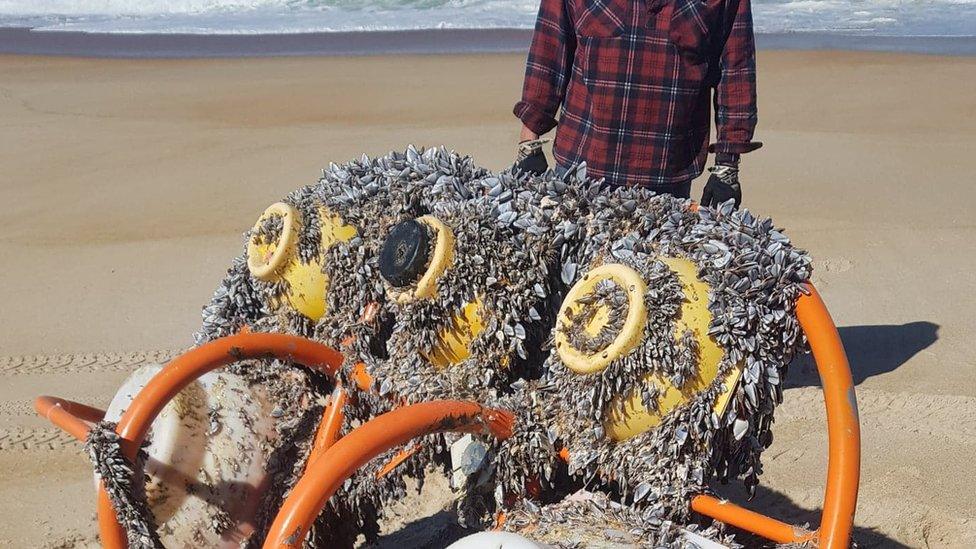Ocean research device found after 8,699-mile five-year journey
- Published

The ocean measuring device was discovered on a beach on the western tip of Tasmania
A device for measuring pressure in the depths of the ocean has been found washed-up on a Tasmanian beach, 14,000km (8,699 miles) from where it was deployed five years ago.
The National Oceanography Centre (NOC) in Liverpool thought it was lost forever when it could not be retrieved as planned on 25 December 2013.
But some of its data remains intact and is now set to be examined.
The NOC said the "remarkable" find "is like an early Christmas present".
The deep-ocean lander was developed in Liverpool and placed in a narrow section of the ocean between South America and Antarctica, known as the northern Drake Passage, in 2011.
It was due to spend two years collecting data at a depth of 1,100 metres before being recovered by a research expedition on Christmas Day 2013.
But it did not return to the surface as planned and the NOC believe something had possibly become tangled up with its release mechanism.
'Epic journey'
Professor Ed Hill, Executive Director of the NOC, said the research the device supports is "key to understanding the dynamics of the global ocean".
"There is no better place to make these observations than the narrow Drake Passage, which is why this instrument was deployed there before it made its epic journey to Tasmania," he said.
The device's frame and data sensors were removed from the beach over a number of days after it was found about three weeks ago.

The deep-ocean lander's sensors were covered in barnacles when it was discovered
Measuring ocean bottom pressure at the northern Drake passage helps scientists understand the Antarctic Circumpolar Current, which is the largest ocean current in the world.
Three times bigger than the Gulf Stream, the Antarctic Circumpolar Current connects all three major ocean basins, transporting heat and carbon between them.
It also circulates around the whole of Antarctica, keeping warm ocean waters away and allowing the Antarctic continent to maintain its huge ice sheet.
The NOC said the research project the instrument was originally deployed for has now finished, but annual measurements along the Drake Passage are continuing.
The work is aimed at improving understanding of the circulation of the Southern Ocean and its influence on the global climate.